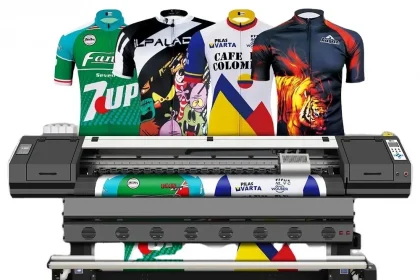Imagine walking through a bustling marketplace. What grabs your attention first? Chances are, it’s those eye-catching, colorful signs inviting you to explore a shop or a booth. Free standing signs are a powerful tool for attracting customers and boosting sales. They are versatile, mobile, and can be placed just about anywhere to draw in foot traffic.
But it’s not just about putting up a sign and hoping for the best. The design, placement, and messaging all play crucial roles in making these signs effective. Whether you’re a small business owner, a marketer, or just someone curious about sales strategies, understanding how to maximize the potential of free standing signs can make a significant difference.
Ready to dive into the world of free standing signs? This comprehensive guide will walk you through everything you need to know—from design tips to ideal locations and real-world success stories. Let’s get started on turning your signs into sales magnets!
Understanding the Impact of Free Standing Signs on Sales
Free standing signs do more than just display a message; they create an experience. These signs serve as silent salespeople, consistently attracting attention and guiding potential customers toward your business.
Capturing Attention
One of the primary benefits of free standing signs is their ability to capture attention effortlessly. Positioned strategically, they can lure in passing pedestrians or drivers, converting them into customers. Bright colors, bold fonts, and clear messaging are key factors in making these signs effective.
Building Brand Awareness
Consistency in design and messaging helps build brand awareness. A well-designed sign that matches your brand’s aesthetics creates a memorable impression. When people recognize your brand, they’re more likely to trust and choose your business over competitors.
Influencing Purchasing Decisions
Free standing signs also play a role in influencing purchasing decisions. Promotional messages, offers, and discounts displayed prominently can encourage impulse buys. For instance, a sign advertising “Buy One, Get One Free” can quickly turn a window shopper into a buyer.
Flexibility and Mobility
The flexibility to move these signs around means you can test different locations to see where they perform best. Whether it’s outside the storefront, near the checkout, or at a busy intersection, free standing signs give you the agility to adapt to various situations and audiences.
In essence, free standing signs are a versatile, impactful tool for increasing sales and enhancing your customer’s experience. Leveraging their full potential can lead to significant business growth.
Designing Eye-Catching Free Standing Signs
Creating a free standing sign that grabs attention starts with a compelling design. The right design can make your sign not just seen, but remembered.
First, choose bold and contrasting colors. Bright colors catch the eye, especially from a distance. Think about the backdrop where the sign will be placed and ensure the colors stand out against it.
Simplicity is your friend. Keep your message clear and concise. Too much information can be overwhelming. A strong headline with supporting details is often enough.
Fonts matter too. Select fonts that are easy to read from afar. Avoid overly intricate or fancy fonts that can be hard to decipher quickly.
Images can enhance your sign, but they should be relevant and high-quality. Poor-quality images can detract from the professionalism of your message.
Don’t forget about lighting. If your sign needs to be visible at night, consider incorporating lights or reflective materials.
Finally, placement plays a crucial role. Ensure your sign is positioned where it maximizes visibility and attracts the most foot or car traffic.
Placement Strategies to Optimize Sales Conversion
Effective sign placement is key to driving sales. Position your sign where it naturally catches the attention of your target audience.
Start with high-traffic areas. Places with heavy foot traffic, like entrances, walkways, or near checkout lines, can ensure your sign is seen by many.
Eye-level placement is crucial. Signs placed at eye level are more likely to be noticed and read. For drivers, this can mean slightly higher placement to account for the height of cars.
Consider directional cues. Arrows or pathways guiding people towards your sign can improve visibility and engagement. Make it easy for people to follow the message.
Think about spacing. Avoid cluttering your sign with too many other signs or displays. Giving it room helps it stand out.
Rotate and refresh your signage regularly. People tend to ignore what they see all the time. Changing the placement or the content can make them notice it again.
Lastly, don’t underestimate the power of landmark proximity. Placing your sign near a well-known landmark can draw additional attention.
By strategically placing your sign in these ways, you can maximize its visibility and, in turn, boost sales conversion. The right placement makes all the difference.

Utilizing Call-to-Actions for Free Standing Signs
The magic of a free-standing sign often lies in a compelling call-to-action (CTA). CTAs are essential for driving the desired response from passersby.
Keep it simple. Use clear and concise language that tells people exactly what to do. Phrases like “Visit Now,” “Call Today,” or “Shop Here” can be very effective.
Add a sense of urgency. Including words like “now,” “limited time,” or “today” can create a sense of urgency that encourages immediate action.
Focus on benefits. Explain what the customer stands to gain by taking action. Instead of just “Call Now,” you could say “Call Now for a Free Quote.”
Consider visuals. Adding arrows, bright colors, or icons can make the CTA more eye-catching and easier to follow. Visuals can draw the eye and reinforce the message.
Be Specific
Specificity can also boost the effectiveness of your CTA. Instead of a generic “Learn More,” you can say “Learn More About Our Summer Sale.” It gives a clearer direction and ties directly into what you’re offering.
Place your CTA prominently. Since this is a free-standing sign, ensure the CTA is positioned where it’s seen first. The lower part of the sign might be missed, so aim for the upper half.
Test different CTAs. Sometimes, small changes can make a big difference. Test various messages and formats to see which one drives the most engagement.
Incorporating a strong CTA into your free-standing sign can significantly impact how well it converts. Simple, urgent, and visually appealing CTAs can capture attention and drive action.
Measuring the Effectiveness of Free Standing Signs
Evaluating the success of your free-standing signs is crucial for understanding their impact and making necessary adjustments.
One simple way to measure effectiveness is by tracking foot traffic. Notice any spikes in the number of visitors or customers after placing your sign. More people coming in could indicate your sign is doing its job.
You can also use unique codes or keywords on your signs. Encourage people to mention these when they visit or make a purchase. This helps you directly attribute those actions to your sign.
Surveys are another option. Ask customers how they heard about your business. Adding a quick question at checkout or sending a follow-up email can provide valuable insights.
Monitor sales or inquiries. Look for any upticks in sales or questions that coincide with deploying your sign. Changes here can be strong indicators of your sign’s effectiveness.
Consider taking before-and-after photos. Study the area where your sign is placed before and after it goes up. Observing changes in how people interact with the area can offer visual proof of your sign’s impact.
Lastly, pay attention to social media mentions. Sometimes, a catchy sign can generate buzz online, bringing more awareness and engagement to your business.
By employing these strategies, you can gauge the performance of your free-standing signs and make informed decisions to optimize their impact.
Implementing A/B Testing for Sign Performance
Implementing A/B testing for your signs can be a game-changer in figuring out what works best. It’s like a mini science experiment for your marketing!
Start by creating two different versions of your sign. These variations could differ in color, wording, size, or imagery. You’re looking to change one element at a time to understand its impact.
Place each version in similar locations and monitor their performance over a set period. Keep track of metrics like foot traffic, sales, or customer inquiries. These real-world results will provide clear indicators of which version is more effective.
Documenting Results
Be meticulous in documenting your findings. Note down details like weather conditions, special events, and any external factors that might influence the outcome. This will help you isolate the effect of your sign variations more accurately.
After collecting enough data, compare the results. The version that garners more attention or drives better sales is the winner. You can then roll it out on a larger scale with confidence, knowing it’s backed by data.
Don’t stop at one test. Keep experimenting with new designs and placements. Continuous A/B testing ensures your signs stay effective and aligned with your audience’s evolving preferences.
This method is not only simple but highly effective in fine-tuning your marketing strategy. Plus, it gives you solid evidence of what works and what doesn’t, saving you from guesswork.
Engaging Customers with Interactive Signage
Interactive signage is a fantastic way to captivate your audience and create memorable experiences. Think of it as taking your signs to the next level by making them more engaging and fun.
Imagine a touchscreen sign where customers can browse your products, watch demo videos, or even place orders. This kind of interactivity not only grabs attention but also provides valuable information in an engaging way.
Another idea is incorporating QR codes. Customers can scan them with their smartphones to access exclusive content, discounts, or event details. It’s a simple addition that bridges the gap between physical signs and digital experiences.
Even simple elements like motion sensors can make a huge difference. A sign that lights up or plays a jingle when someone walks by can intrigue passersby and draw them into your store.
Don’t forget about social media integration. Allowing customers to take selfies with your interactive sign and share them on social platforms can amplify your reach and create buzz.
Interactive signage not only enhances customer engagement but also provides you with valuable data. You can track interactions to understand what customers are most interested in and tailor your marketing strategies accordingly.
Incorporating these elements can make your signage not just a tool for communication, but an active participant in engaging with your audience. It’s all about making the customer experience more dynamic and enjoyable.
The Bottom Line: Strategies for Long-Term Sales Growth
In the quest for long-term sales growth, integrating innovative signage strategies is a game-changer. Combining eye-catching digital displays with personalized content can significantly boost customer engagement and win over new clientele. Interactive signage, in particular, transforms passive viewing into active experiences, making a lasting impression.
Remember, the key is not just to capture attention but to engage and inform. Augmenting traditional signage with interactive elements such as touchscreens, QR codes, and motion sensors invites customers to connect with your brand on a deeper level.
On top of that, keep it dynamic. Regularly update your content to keep it fresh and relevant. Use seasonal themes, upcoming events, or latest promotions to entice customers back through your doors.
Don’t be afraid to dive into data. Analyze customer interactions with your signage to understand their preferences and behaviors. This insight is invaluable for refining your strategies and making data-driven decisions.
Building a solid strategy means thinking long-term. Focus on creating exceptional customer experiences that foster loyalty and word-of-mouth referrals. Happy customers are your best advertisement, and interactive signage helps ensure they leave with smiles on their faces.
In conclusion, leveraging the power of innovative, interactive signage can set your business on the path to sustainable growth. Engage, inform, and delight your customers every step of the way, and watch as your sales soar to new heights.









